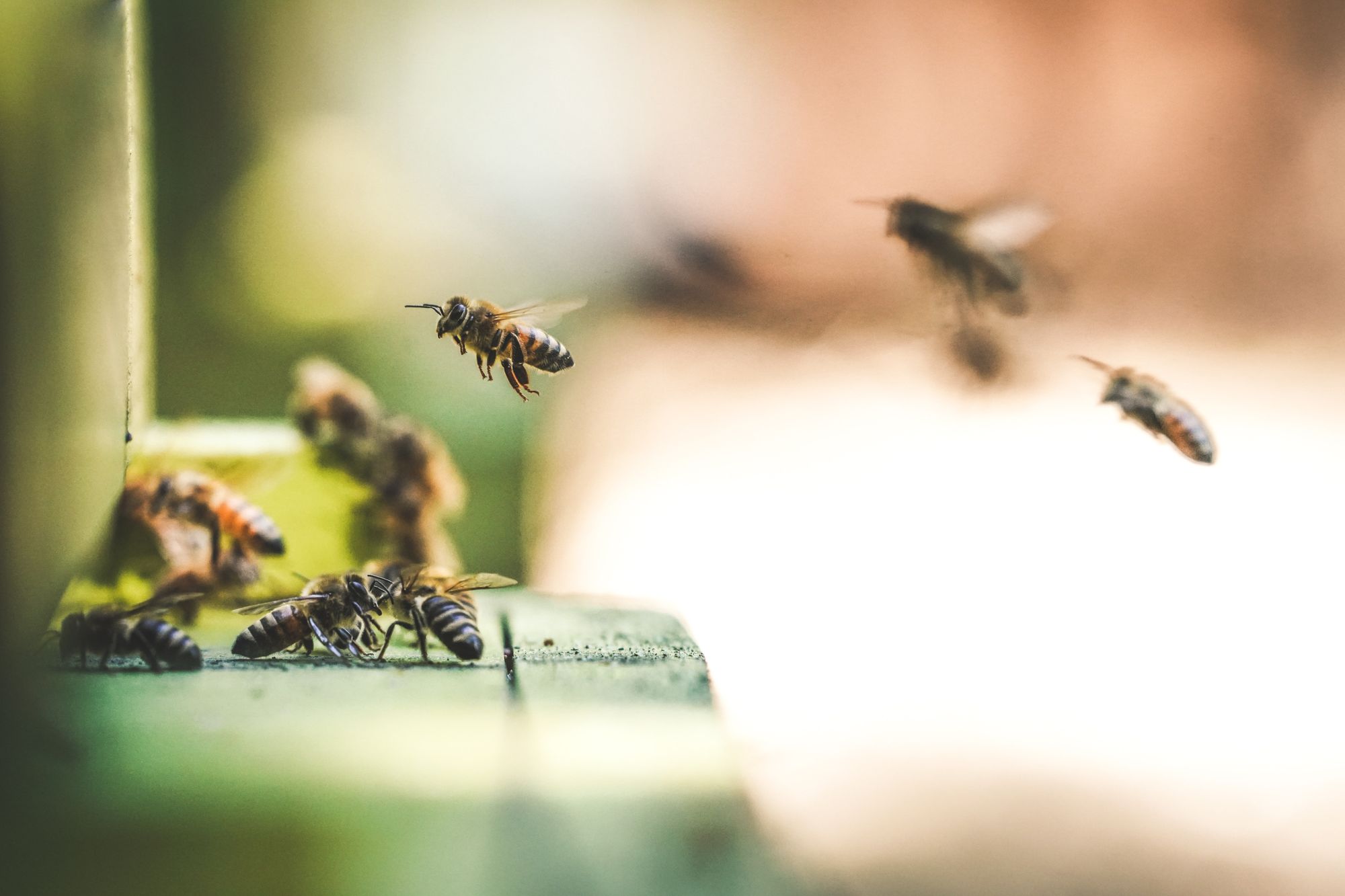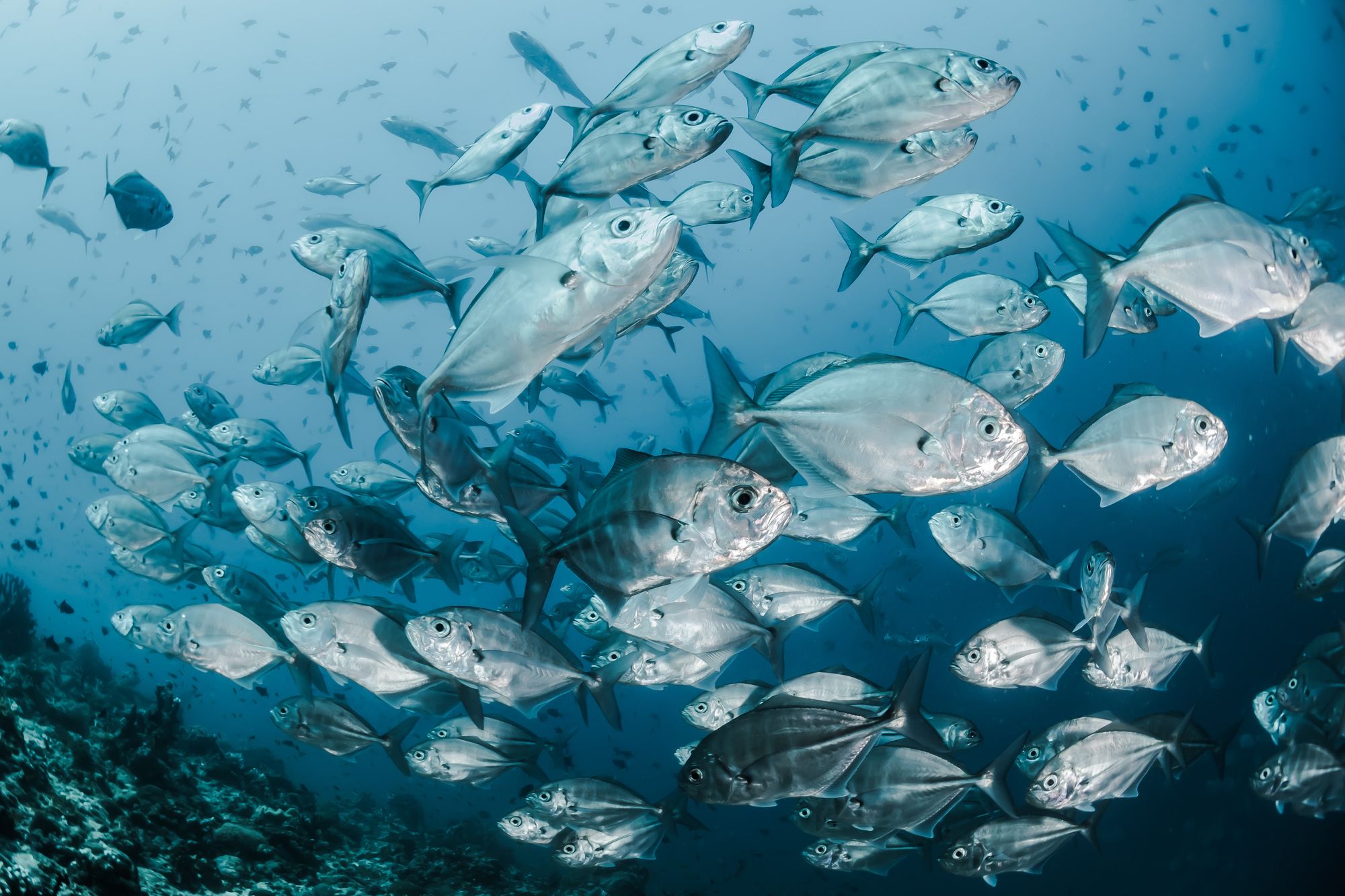Pollinators in Crisis
Ruled by a queen, they have five eyes, the females do all the work, and the males have one job: to mate and die. Sound like your deadbeat cousin’s family? It’s not. It’s the lives of bees. And we need to protect them.

Across this country, bees are under attack. Their demise literally takes food out of our mouths and will prove to be devastating to our ecosystem. Several species of bees need protection. Here in California, an appeals court got creative in providing protection by ruling some bumble fees are fish.
I find it ironic that earlier legal protection for bees by the Endangered Species Act was challenged by agricultural groups. They won because a California Superior Court judge agreed that the E.S.A. was designed to protect invertebrates like fish. To reverse that, an appeals court has now ruled that a few species of bumble bees can be legally defined as invertebrates along with fish, snails, and other spineless creatures.
Why the buzz?
Bees pollinate $30 billion (with a “B”) worth of crops, in this country. The threat of their extinction leaves us vulnerable in food production, climate change, and the foundation of our ecosystem.
And while bees support leading food crops and wildlife, these pollinators can’t do their work in high temperatures. As global warming forces them to seek colder climates for their survival, our ecosystem becomes imbalanced. We were always told that nature hates a void. In this case, it’s true. When bees become extinct, generalists replace them. I guess it’s like the workers who come in during a labor strike. They take the places of the original specialists, but these bee replacements are generalists and not as skilled in specialized functions. Major changes to our ecosystem threaten its integrity. We can think of our ecosystem as a huge natural machine of interdependent participants. Each role keeps the whole system working. Lose or change a role, or worse yet, change the characteristics of the system, and it suffers.
Scientists continue to conduct research to find the reasons pollinators are facing devastation. They point to parasites, poor nutrition, and pesticides. Pesticides are weakening the immune systems of bees making way for viruses that in some cases, annihilate entire colonies.
The number of honey beehives in the U.S. has dropped from six million 80 years ago, to 2.5 million today. According to the Center for Biological Diversity, more than half of North America’s 4,000 native bee species are in decline, with 1 in 4 species at risk of extinction. Of the 4,000 bee species native to North America, more than 800 call Texas home, this includes nine types of bumble bees who mostly inhabit east Texas.
A Master Class in social cooperation.
Bee observers tell us we can learn a lot from the way bees operate. The role of each bee is crucial for the survival of the hive—it’s one for all, for sure. Worker bees protect the hives, nurture its food, and take care of the young bees. The queen oversees the hive and its population. She lays female and male eggs. Drones are the male bees who mate with the queen, but they don’t work, make honey, or sting. They sound like subjects for a country music song. But the point is that the bee mechanisms, left unthreatened, work.
It's time to step up to help them
The decline of bees will rock our world if we don’t ramp up efforts to protect these hard workers who contribute to the integrity and sustainability of our environment.
Pollinator Partnership is one of many organizations working to save bees in the U.S., Canada, Mexico, and around the world. Here is their list of ways to help:
PLANT FOR POLLINATORS
• Habitat opportunities abound on every landscape – from window boxes to acres of farms to corporate campuses to utility and roadside corridors – every site can be habitat.
• Utilize plants native to your area (or at the least, non-invasive for your area).
• Utilize the Ecoregional Planting Guides and the Garden Recipe Cards to create or enhance your pollinator garden. Decide among the plant material options - seeds, plugs, plants, or a combination.
• Know your soil type and select appropriate plant material.
• Plant in clusters to create a "target' for pollinators to find.
• Plant for continuous bloom throughout the growing season from spring to fall.
• Select a site that is removed from wind, has at least partial sun, and can provide water.
• Allow material from dead branches and logs remain as nesting sites; reduce mulch to allow patches of bare ground for ground-nesting bees to utilize; consider installing wood nesting blocks for wood-nesting natives.
REDUCE OR ELIMINATE THE IMPACT OF PESTICIDES.
• Check out the Pesticides Learning Center on the Pollinator Partnership website to learn more about the interactions between pollinators and pesticides!
• Where possible, avoid pest problems in the first place by burying infested plant residues, removing pest habitat, and planting native plants that encourage natural enemies of pests.
• Practice Integrated Pest Management (IPM).
• If you are a farmer or pesticide applicator, check out our Pesticide Education Module.
• If you must use pesticides, read, and follow ALL label directions carefully.
REGISTER AS A BEE-FRIENDLY FARMING GARDEN
• Register your home or community garden with Bee Friendly Farming Garden to showcase your commitment to pollinator health!
• Along with your registration, you can opt to receive your very own BFF Garden sign, to encourage others to do the same.
• Your registered garden will appear on the Bee Friendly Farming map, along with any photos you choose to submit.
• Apply here!
• If you are a farmer, rancher, or apiarist there are other options for you. Check out the Bee Friendly Farming page to learn more.

We need bees. Not bee substitutes but the strong, organized world major players that carry the magic dust that plants and foods are made from. It is unfortunate that often human creations of convenience and profit, harm the time-tested systems which pre-date us. When that happens, we should course-correct and clean up our mess, even if it takes a code change from bee to fish.
